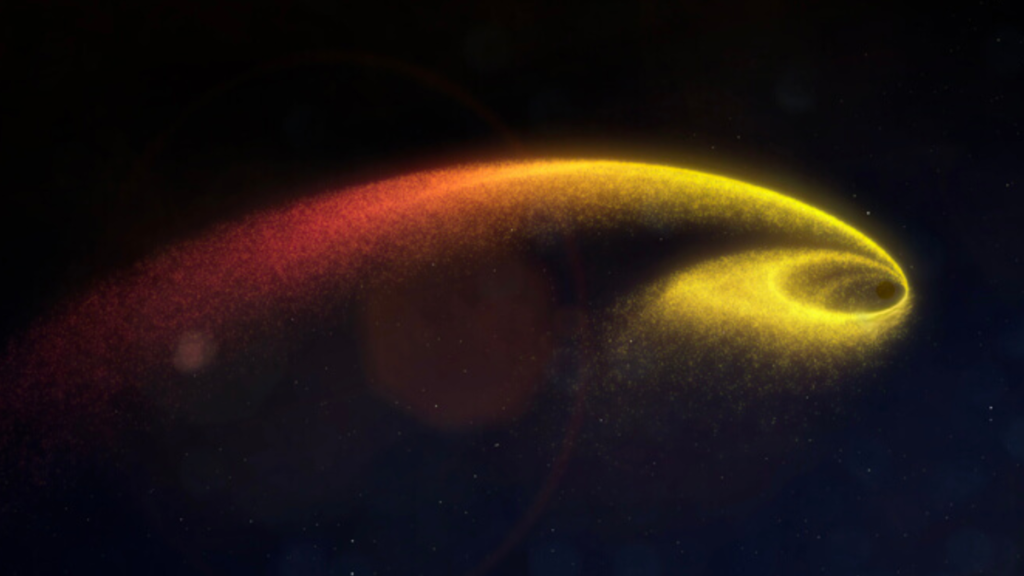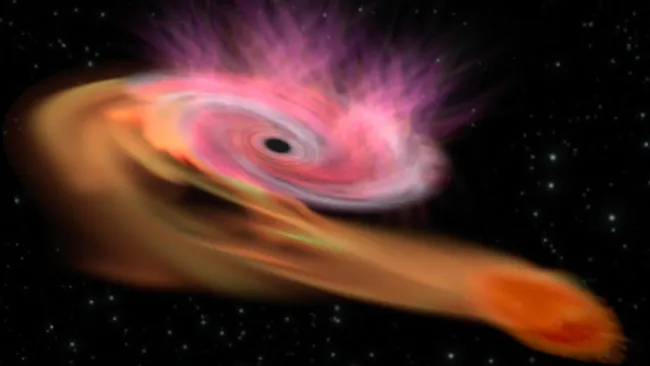Astronomers have recently observed one of the most dramatic cosmic events ever recorded: a supermassive black hole, located approximately 9 billion light-years away, tearing apart a massive star in what is known as a tidal disruption event (TDE). This particular event, designated AT2023vto, stands out as the largest and brightest TDE ever detected, offering a rare glimpse into the extreme forces at play in our universe.
Tidal disruption events occur when a star ventures too close to a supermassive black hole. The intense gravitational pull of the black hole exerts such powerful tidal forces on the star that it stretches and ultimately rips it apart in a process known as “spaghettification.” In the case of AT2023vto, the black hole, which is about 10 million times more massive than our Sun, shredded a star roughly nine times the Sun’s mass. The sheer size of this star makes this TDE particularly noteworthy, as it is the largest stellar body ever observed being destroyed by a black hole
.

What makes AT2023vto even more fascinating is its incredible brightness. Despite being 9 billion light-years away, the event was so luminous that it could be observed from Earth, setting a new record for TDEs of this kind. Typically, TDEs are observed much closer to home, but AT2023vto’s brightness allowed astronomers to study it in detail, even at such a great distance. The event was initially mistaken for a supernova, which is a stellar explosion, but further analysis revealed its true nature—a testament to the power and scale of the forces involved.
Interestingly, unlike some other TDEs, AT2023vto did not exhibit relativistic jets—streams of material ejected at nearly the speed of light. These jets are seen in about 1% of TDEs, making them extremely rare. The absence of jets in this event places it in the majority of TDEs, yet its exceptional brightness still sets it apart. This discrepancy has intrigued astronomers, as it challenges existing theories about what determines the presence or absence of these high-speed jets during such events.
Moreover, this TDE is still ongoing, meaning there could be more to discover. The possibility of delayed emissions, or “burps,” from the black hole remains, which could provide further clues about the complex physics of tidal disruption events. As astronomers continue to monitor AT2023vto, they may uncover new phenomena that challenge or refine our understanding of these extreme cosmic events.



















